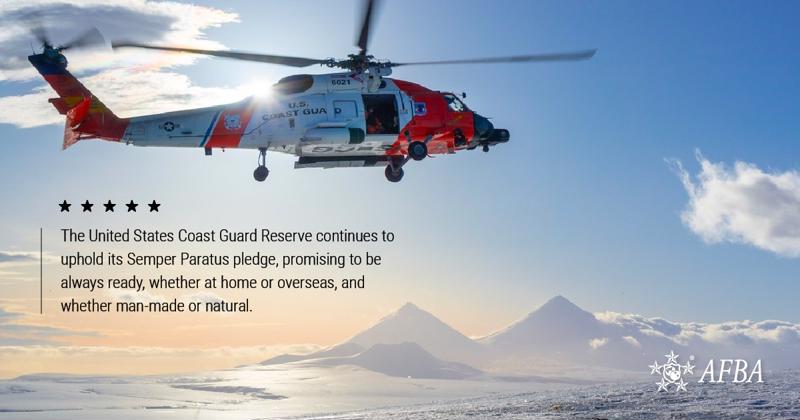On Tuesday, Feb. 19, 2019, the United States Coast Guard Reserve will celebrate its 78th year of being "Semper Paratus," or "Always Ready."
Though still a spring chicken compared to the Coast Guard, which was itself formed in 1790 as one of America's five armed forces, the Coast Guard Reserve's nearly eight decades of history is worth reflecting upon.
From World War II to today, reservists have served our nation proudly, responding to foreign enemies as well as natural disasters. Here is a look back at the rich heritage that many will be observing this Tuesday.

USCG Reserve created just in time to serve in WWII
The U.S. Coast Guard Reserve actually traces its beginnings back to the signing into law of the Coast Guard Reserve Act on June 23, 1939, which created a non-military reserve service made up of volunteer boat owners and yachtsmen, performing the types of tasks handled by today's Auxiliary.
It was not until the Auxiliary and Reserve Act of 1941 was signed into law on Feb. 19, 1941, that the two organizations became separate entities, which is why the Reserve celebrates the 19th as its birthday. The legislation designated the Coast Guard Reserve as a military branch of the Active service, and turned the civilian volunteers into the Auxiliary, creating a separation that still exists to this day.
The service's birth couldn't have come at a more opportune time, as America entered into World War II later that year after the Japanese bombed the American fleet in Pearl Harbor on December 7, 1941. The Active Duty "regular reservists" ended up serving side by side with their regular Coast Guard shipmates in all phases of wartime operations, with their heroics on display in locations ranging from Iwo Jima to Normandy.
According to the Reserve, there were 6,800 Reserve Officers, 300 Reserve Warrant Officers and over 135,200 Reserve enlisted by the end of the war, outnumbering the regular Coast Guard by a ratio of five to one.
Evolving roles in the years that followed
After the conclusion of WWII, the Reserve was disbanded, with all of the regular and Temporary Reservists returning to their civilian status.
This remained the case for several years, until a 1948 executive order from President Truman ordered all five branches to "stimulate, enlarge and train" their respective Reserve components. The following year, the first federal funding was finally approved for Coast Guard Reserve units, and in 1950, hundreds of Coast Guard Reservists volunteered for Active Duty in the first year of the Korean War.
During the early phase of the Vietnam War, the Coast Guard Reserve hit peak recruitment numbers, with more than 18,000 members recorded in 1965. Yet numbers dwindled as the conflict wound down, and there was again discussion of disbanding the Reserve, according to Military Benefits.
But in October of 1972, Congress tasked the Coast Guard Reserve with a new mission when it authorized the involuntary call up of Coast Guard Reservists for peacetime assistance. Since then, the Reserve has responded to numerous accidents and natural disasters, including the Mississippi, Ohio and Red River floods, the 1980 Mariel Boatlift, as well as multiple vessel explosions, sinkings and airplane crashes.
More recently, Reservists supported rescue and recovery operations related to the earthquake in Haiti and helped out in the aftermath of the Deepwater Horizon oil spill in 2010, and participated in the recovery efforts following Superstorm Sandy in 2012.
Today, as it enters its 78th year, the United States Coast Guard Reserve continues to uphold its Semper Paratus pledge, promising to be always ready, whether at home or overseas, and whether man-made or natural.


